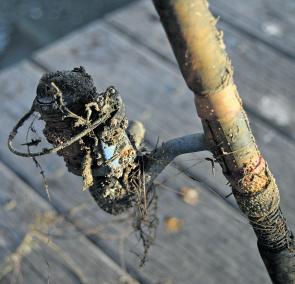Over the next few issues, I plan to look at the basic care and maintenance of your fishing gear, starting this month with those most important, complex and costly items of tackle: your reels.
With the possible exception of those tough, simple, Aussie-made Alvey sidecasts, most modern fishing reels generally require a bit more maintenance than rods. That’s because reels have a more complex assembly, with various moving parts, both internal and external.
One of the best way to look after your fishing reels is to remove them from your rods whenever an outfit isn’t in use (including time spent travelling) and store them separately. I also recommend that you wash your reels after use (especially if fishing in saltwater) and lubricate them from time to time, as well as having all reels serviced professionally once every year or so by a qualified technician. Let me explain:
After a fishing trip, you can wash your reels while they’re still attached to the rods, or (better still) remove them first. However, if you use a hose or tap to wash gear, be extra careful not to direct a high pressure jet of water onto the reel. This risks forcing water, salt, sand and dirt into the internal workings of the reel. Instead, use a very fine, soft spray or a trickle of slow-flowing water to rinse off the outside of your reels. Better still, fill a basin or bucket with warm, soapy water and use a soft cloth dipped in this water to gently wipe over your reels, paying particular attention to any nooks and crannies where nasties may gather. After rinsing the reels in this way, wipe the remaining water off with a dry cloth and spin the handle a few times to throw off any excess droplets.
Following every third or fourth outing, I recommend that you apply a drop or two of fine grade machine oil to all of the reel’s external moving parts, including the handle knobs, bail arm assembly, bail roller, any level-wind device and so on. Sewing machine oil is fine for this purpose, although specialist reel lubes are also available. An occasional light squirt of the reel’s exterior with an aerosol lubricant is also a good idea. However, try not to spray too much of this stuff onto the spool or the fishing line itself as the chemicals in some lubricants may degrade nylon fishing lines (and many people believe that the smell of chemicals on your line can put some fish off biting). For this reason, it’s usually best to spray the aerosol lubricant onto a cloth then wipe the reel with this cloth.
Store your reels in a cool, dry place, well away from direct sunlight. While you’re at it, make a note of the make, model and any serial numbers of all your reels and add these details to your household contents’ insurance policy, in case of theft or fire.
Every year or two, or any time your reel begins to make funny grinding noises or seems stiff and lumpy to turn, take it to a reputable tackle shop and have it fully serviced by an expert. You can certainly do this job yourself at home if you have even a modest level of mechanical aptitude, but in this age of specialisation and out-sourcing, why bother? Unless you’re the sort of person who changes the oil in your own car and can rebuild a cranky lawn mower, I recommend you avoid the headaches and pitfalls of reel servicing and pay an expert to handle the job. The more expensive and complex the reel, the more the use of such an expert makes sense.
Next month we’ll examine basic maintenance procedures for your rods and other items of tackle.
Reads: 2964
This rod and reel outfit may be a little beyond the help of basic maintenance! Its only hope of continued life is a complete rebuild.

Beach fishing can be particularly hard on reels with its harsh combination of salt, sand and sun. Note the PVC tube rod holders being used in the background to keep outfits up out of the sand.

By its very nature, kayak fishing is also tough on reels, which spend a lot of time close to the water and are regularly doused with spray.




